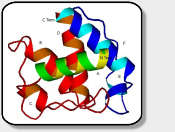Distance Learning: Techniques in Structural Molecular Biology (TSMB)
Postgraduate Certificate
| TSMB Syllabus | ||||||||||||
| Section 6: Macromolecular Electron Microscopy |
Electron Microscopy (EM) is a technique that is complementary to X-ray crystallography as it enables the study of non-crystalline, very large or transient macromolecular structures.
|
Objectives To introduce the students to the principles of and techniques used in studying protein structures using electron microscopy methods. To illustrate how images are obtained and explain the importance of resolution. To compare the different EM techniques available to structural biologists. At the end of this section, students should:
|
